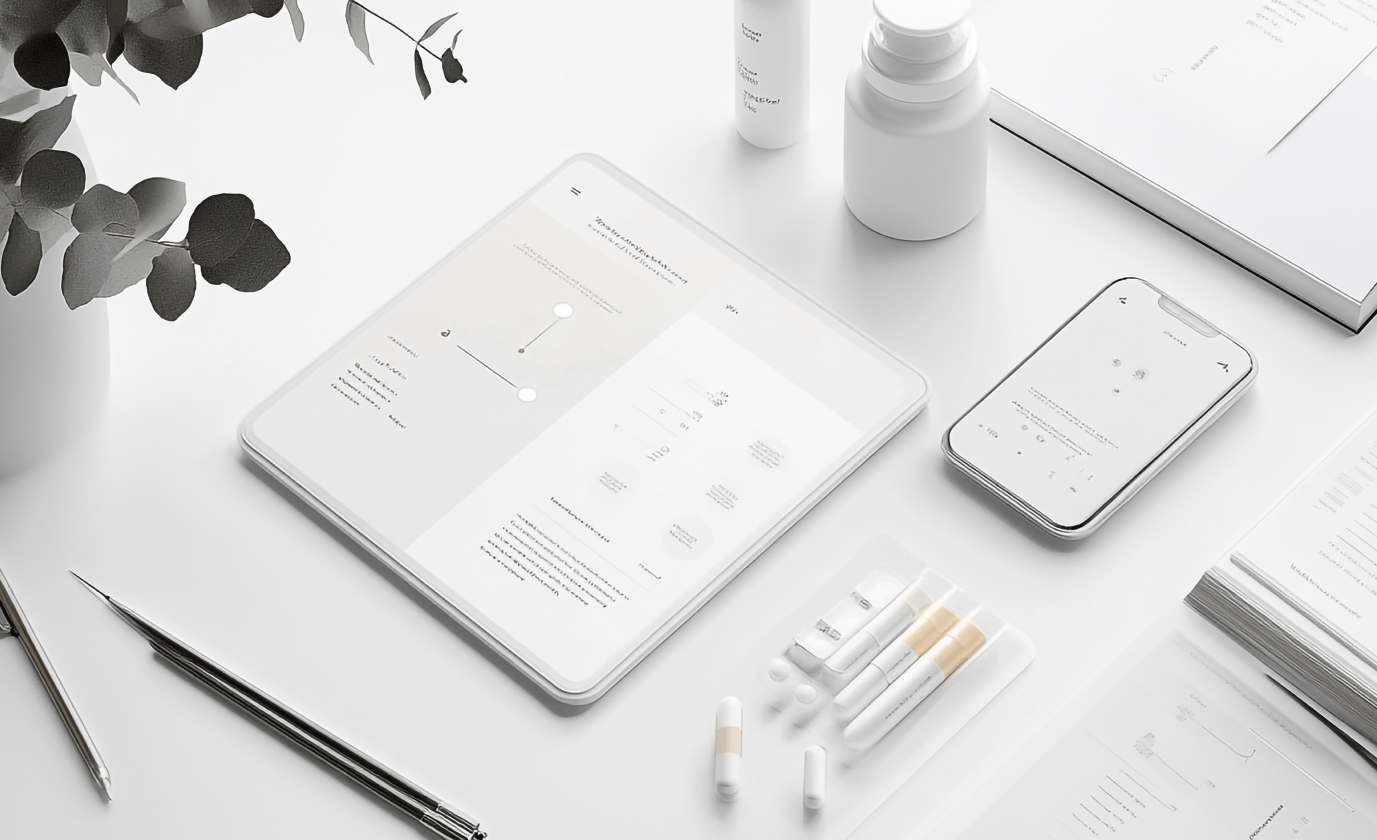Inclusive Design for Digital Health Applications: Accessibility for Everyone

- What Is a Digital Health Application?
- The Importance of Accessibility in Digital Health Applications
- Key Features of Inclusive Design
- Benefits of Inclusive Design in Digital Health Apps
- Expanding User Base
- Improving Access to Healthcare
- Enhancing User Experience
- Boosting Brand Reputation
- Successful Case Study: 360 Sağlık
- Transform the Experience with VOYA
Inclusive design approaches consider users’ physical and cognitive differences, as well as their access to technology, ensuring that digital products serve a broad and diverse audience effectively and equitably. In digital health platforms, adopting an inclusive design mindset plays a crucial role in enhancing both user experience and application effectiveness.
What Is a Digital Health Application?
Digital health applications are designed using digital technologies to meet individuals’ healthcare needs, facilitate disease management and make healthcare services more accessible. These applications allow users to track their health by recording data such as daily step count, sleep patterns, and calorie intake.
Beyond general health monitoring, digital health applications also assist in tracking chronic conditions and implementing treatment plans. Some apps offer features that enable patients to have video or text consultations with healthcare professionals, providing users with accurate and up-to-date medical information. Additionally, these applications help individuals make healthier lifestyle choices by increasing awareness. Regular reminders make it easier to manage essential health-related tasks such as medication intake, appointment schedules, and exercise routines.
Digital health applications benefit not only patients but also healthcare providers. Medical professionals can remotely monitor patients’ health conditions and intervene when necessary. By offering cost-effective and efficient solutions, these applications contribute to making healthcare more accessible and equitable.
The Importance of Accessibility in Digital Health Applications
The global e-health market was valued at $182.75 billion in 2023. According to a report by Kings Research, the market is projected to exceed $625 billion by 2031.
Additionally the digital therapeutics market, which is considered separate from the broader e-health sector, was valued at $6.17 billion in 2023 and is expected to grow beyond $40 billion by 2031. These growth figures highlight the increasing need for healthcare providers and investors to focus on digital health applications.
From a societal perspective, the need to develop specialized solutions for individuals with limited access to technology and users with disabilities is becoming increasingly relevant. The fact that 1 billion people worldwide have some form of disability highlights the necessity for digital health applications to be accessible to everyone.
Accessible healthcare applications are not only an economic necessity but also a legal and social obligation. Organizations such as the World Health Organization and the European Union contribute to establishing a legal framework through strategies aimed at increasing inclusivity in digital healthcare access.
Key Features of Inclusive Design
The inclusive design approach must be adopted in addition to make digital health applications accessible to everyone. The core principles of inclusive design include:
- Flexibility: Inclusive design ensures that applications function seamlessly across different devices and varying internet speeds, making them accessible to a broader audience.
- Localization: Applications should offer content tailored to users' language preferences and cultural contexts, enhancing user adoption and engagement.
- Usability: Apps must provide a clear, intuitive and fast user experience. As UX pioneer Don Norman emphasizes, effective designs follow the principle of "Less is more", prioritizing simplicity over complexity.
- Accessibility: Applications should comply with W3C accessibility standards, ensuring features like alt text for images, adequate color contrast, and keyboard navigability.
- Equity: Inclusive design aims to serve all users, regardless of age, gender, disability, or digital literacy levels.
Benefits of Inclusive Design in Digital Health Apps
Digital health applications designed with the principle of inclusive design offer several benefits; such as increasing the number of users, making healthcare services more accessible, improving user experience and enhancing brand reputation. Let’s take a closer look at these benefits:
Expanding User Base
Inclusive design allows more people to access digital healthcare services by considering age, gender, disabilities and cultural differences. For instance, screen reader compatibility can help visually impaired users navigate the application effectively.
Improving Access to Healthcare
Inclusive design ensures that health services are accessible to everyone, not just a select group. Features such as larger text sizes and simplified interfaces help older adults monitor their health more easily.
Enhancing User Experience
A clear, user-friendly interface reduces complexity, making applications easier and more efficient to use. A well-designed user experience encourages long-term engagement with the app.
Boosting Brand Reputation
Applications that meet accessibility standards enhance brand credibility. A commitment to inclusive design builds trust and strengthens the brand’s position in the digital healthcare market.
Successful Case Study: 360 Sağlık
Developed in collaboration between VOYA Digital and 360 Sağlık, the 360 Sağlık app is a user-friendly and unique UI/UX design, serving as a successful example of inclusive design.
In the initial phase of the design process, an in-depth analysis was conducted on users' needs, behaviors, and challenges. Based on these insights, the goal was to design a mobile app that enables users to easily access home care services, doctor consultations, and personalized health management tools.
An intuitive interface was created to ensure users could quickly and easily reach the services they need. A color palette featuring shades of purple and neutral tones was chosen to give the application a professional and trustworthy appearance.
The 360 Sağlık app has been designed as a user-centric and accessible platform that allows users to access healthcare services digitally with ease. As a result, healthcare services have become significantly more accessible for everyone.
Transform the Experience with VOYA
At VOYA, we offer a wide range of services from MVP product design to UX audits and research, development services to SaaS design, tailored to every brand and product's needs. Through our UX audit service, we help create experiences that enhance user loyalty, address their needs and meet their expectations. To better understand your users and create successful digital products, you can schedule a meeting with us today!
Explore All Blogs
Ready to discuss your project details?
Do you have a clear vision regarding the ideas, goals, requirements, and desired outcomes for your project? Let's take the first step together by setting up a meeting to bring all of these to life.
Product
Design Studio
Plaza B Blok No: 4 D: 573 Sarıyer,
34485, İstanbul / Türkiye
Entertech Teknokent Avcılar,
34320, İstanbul / Türkiye










